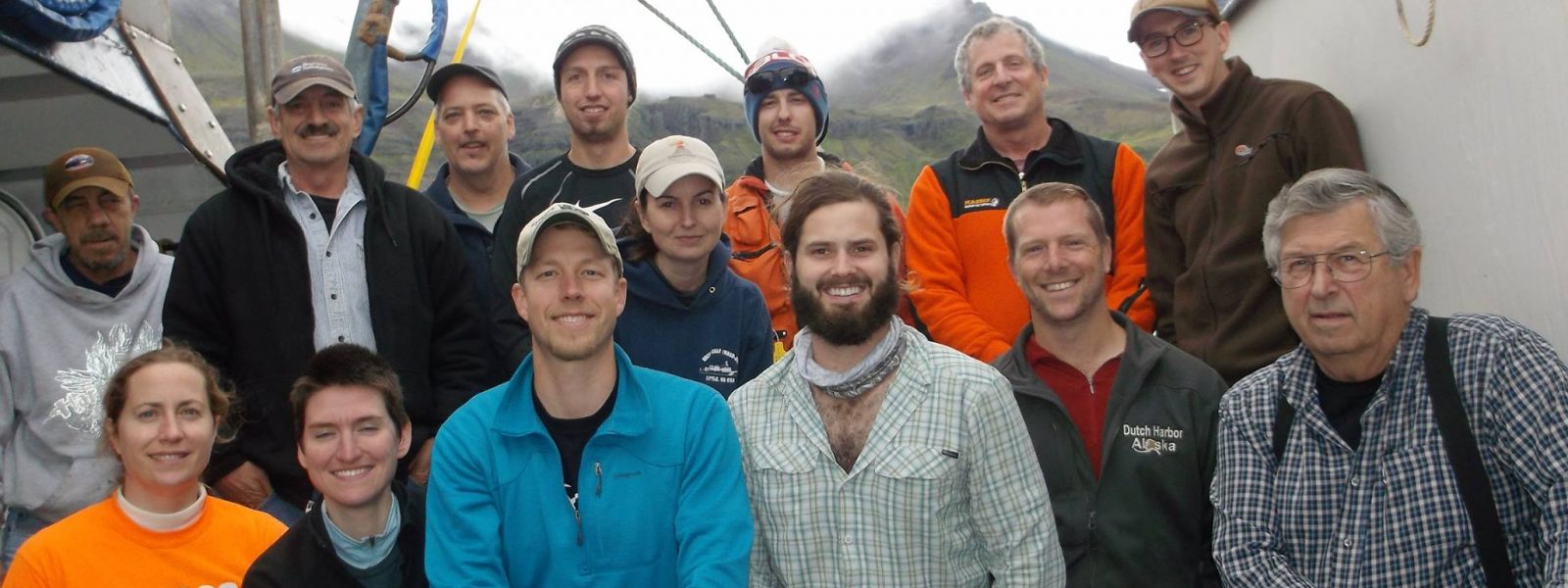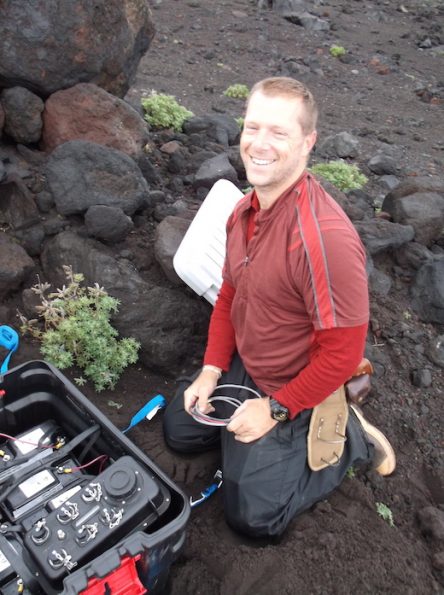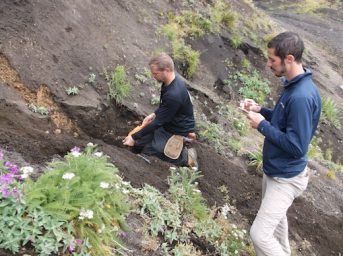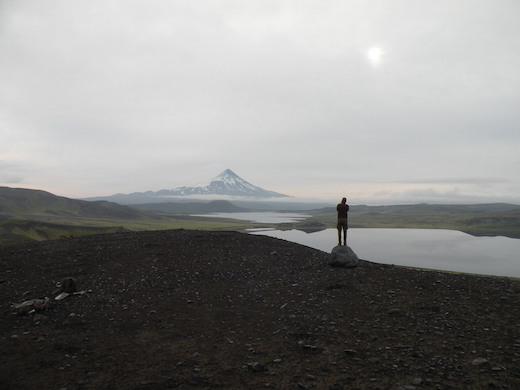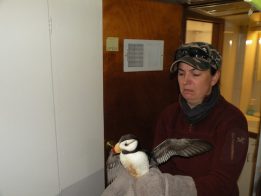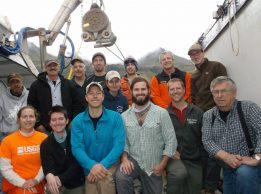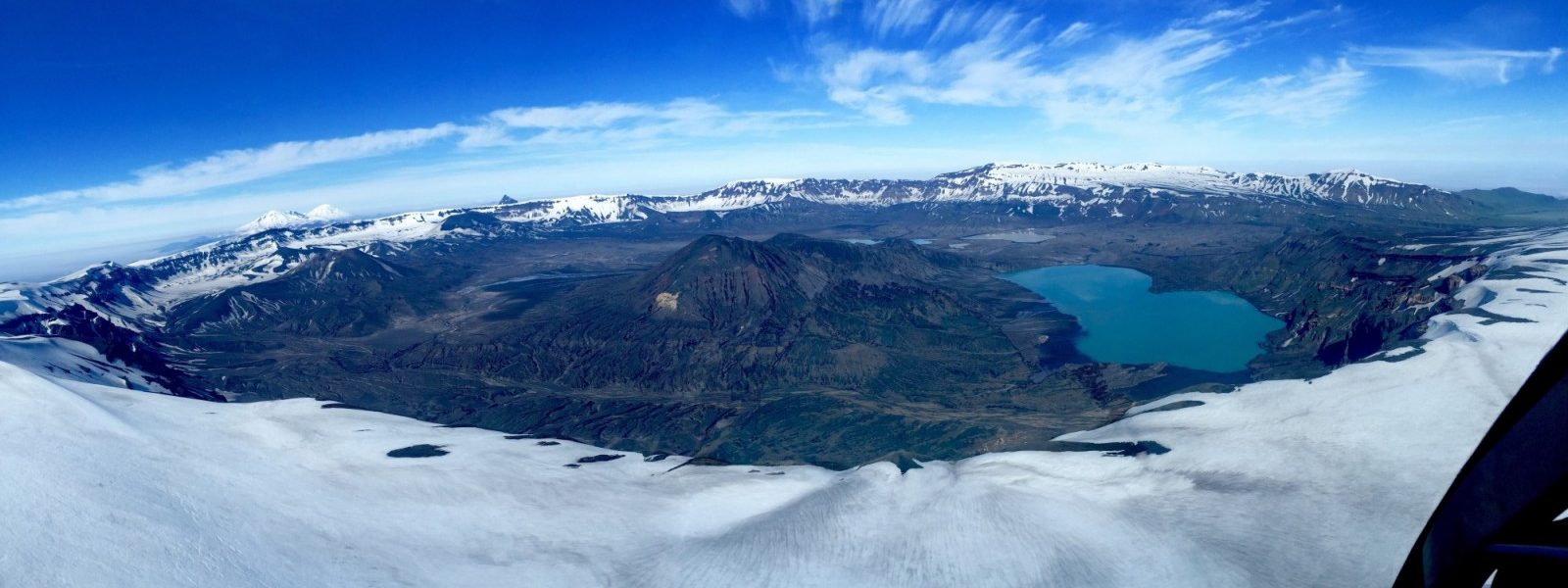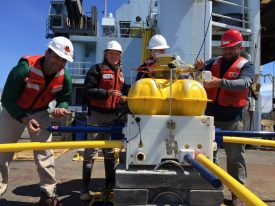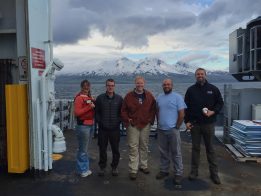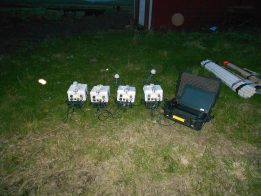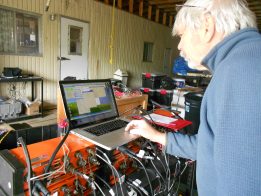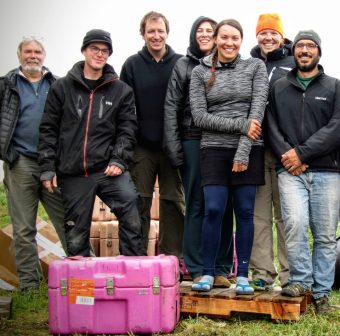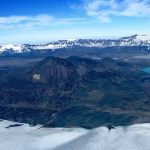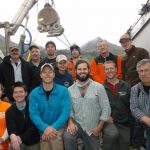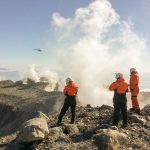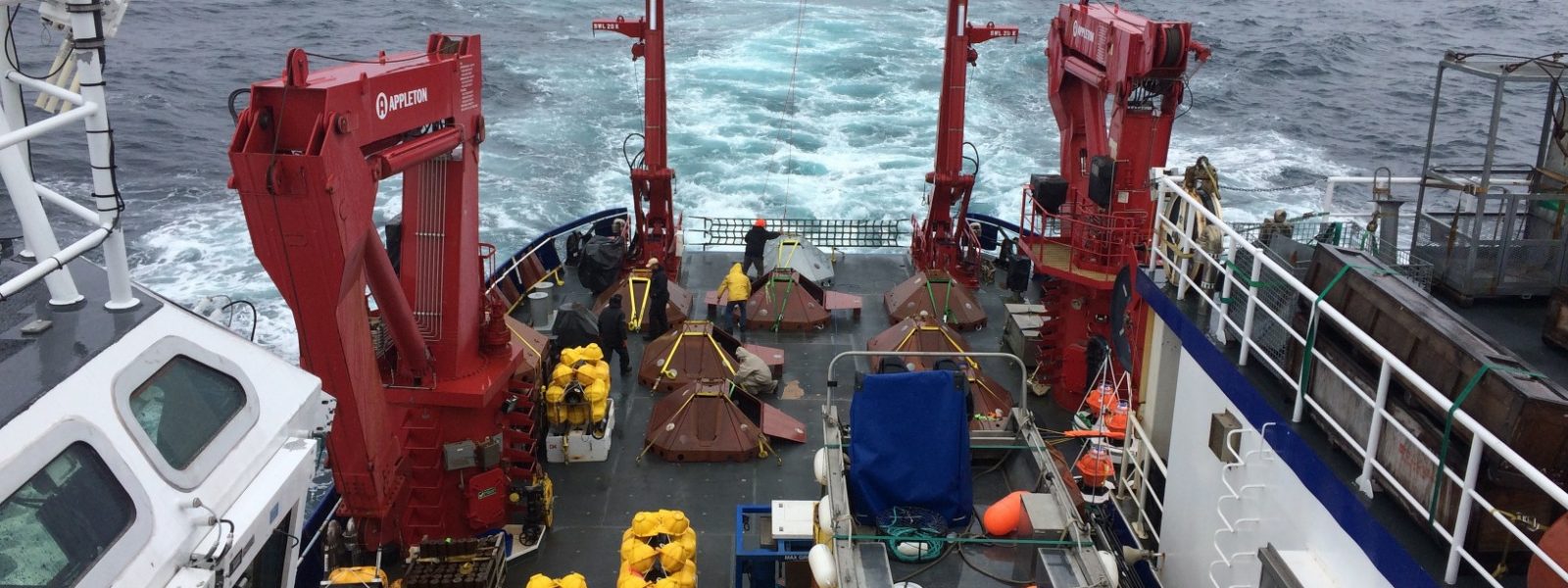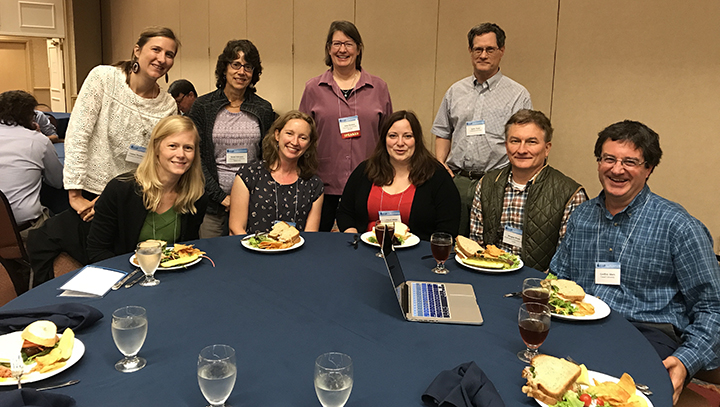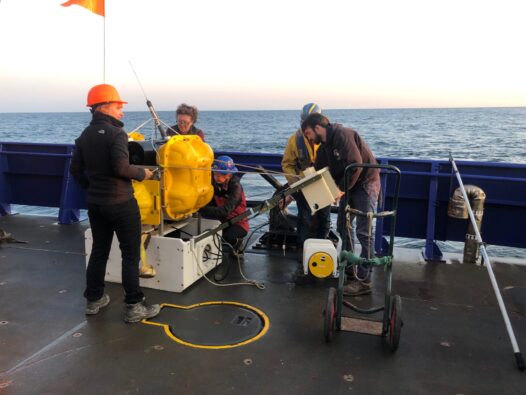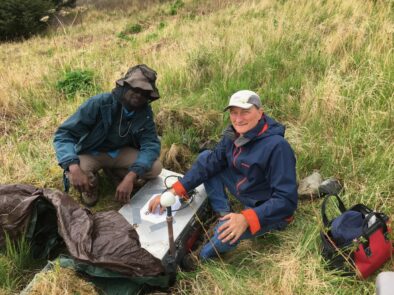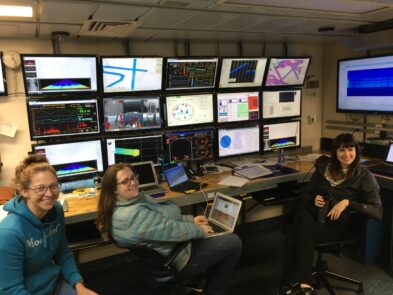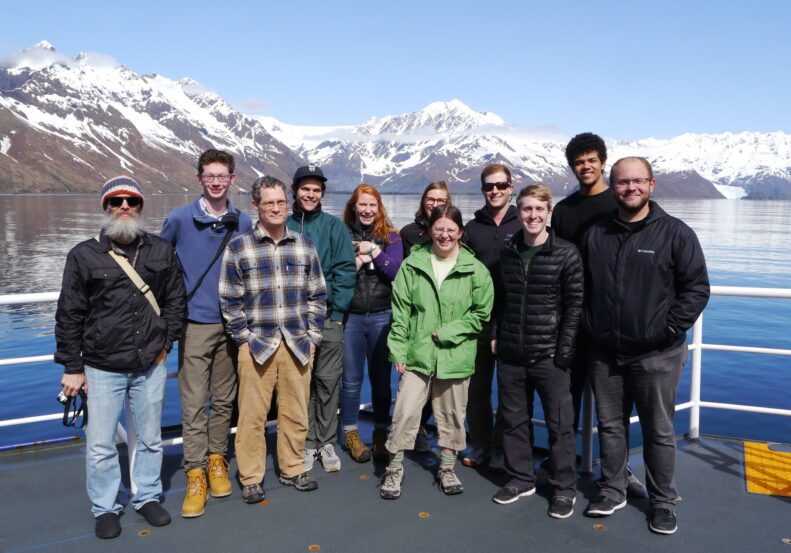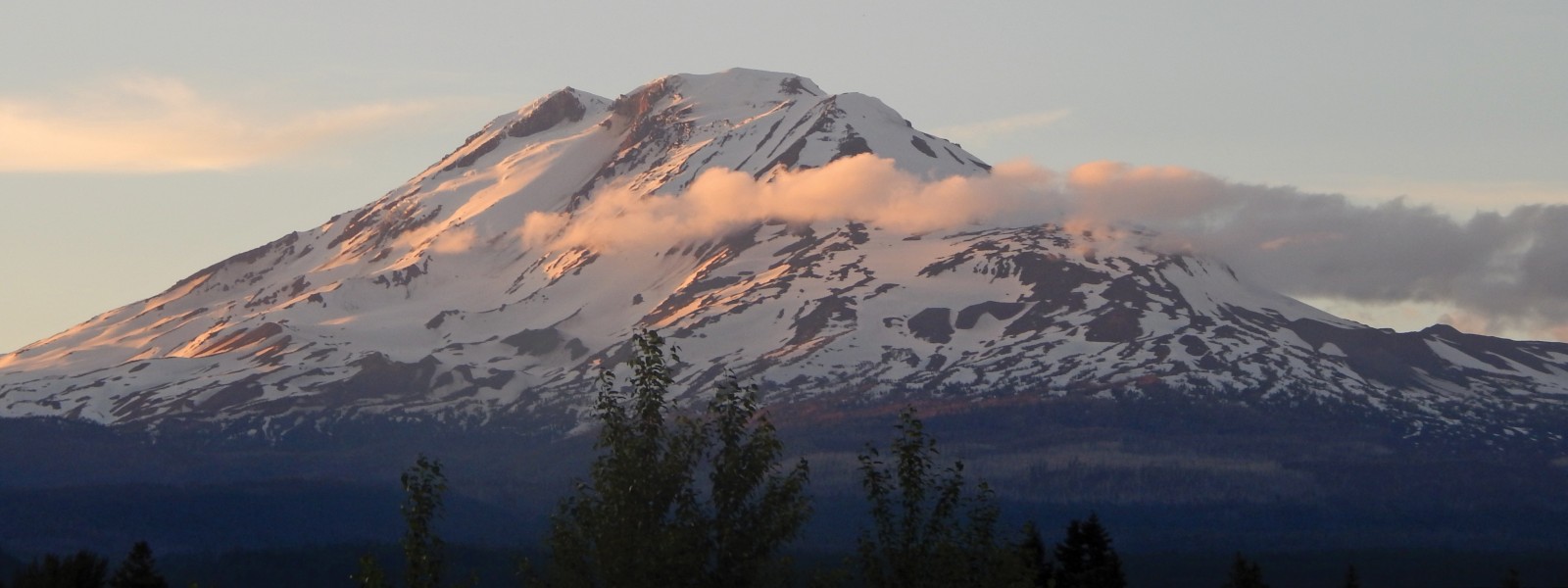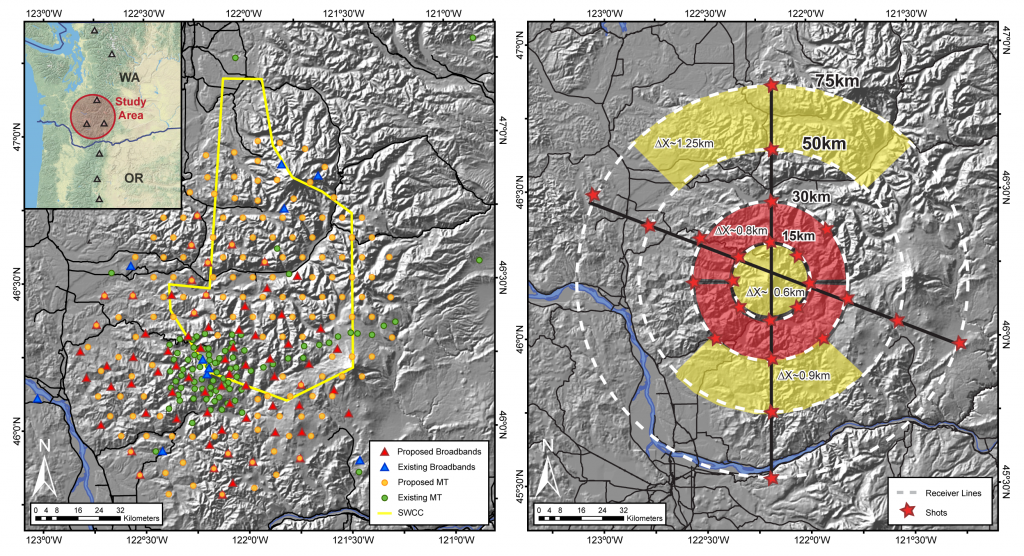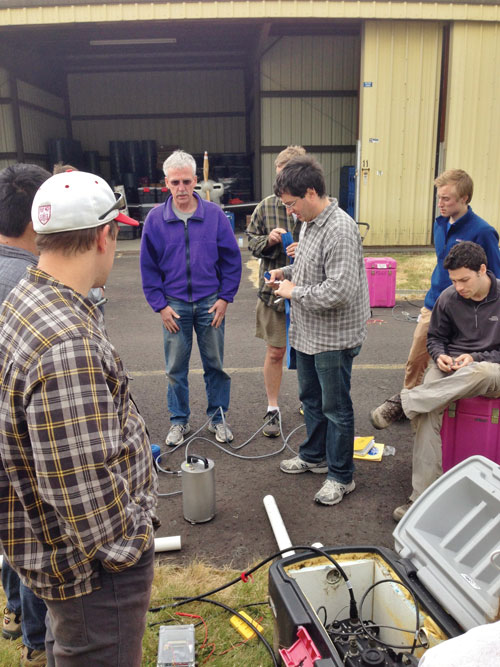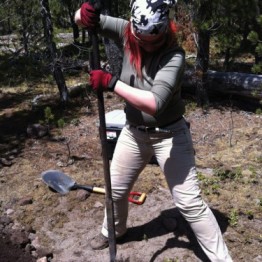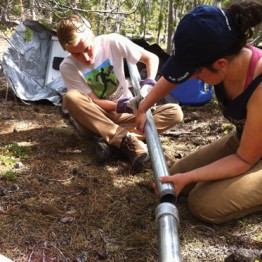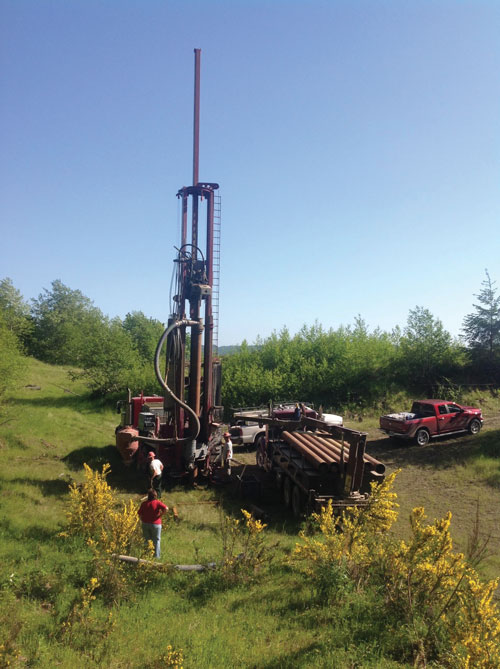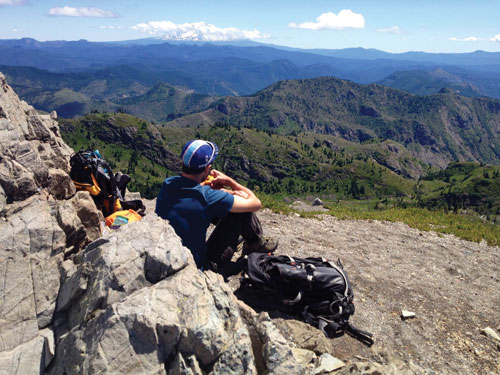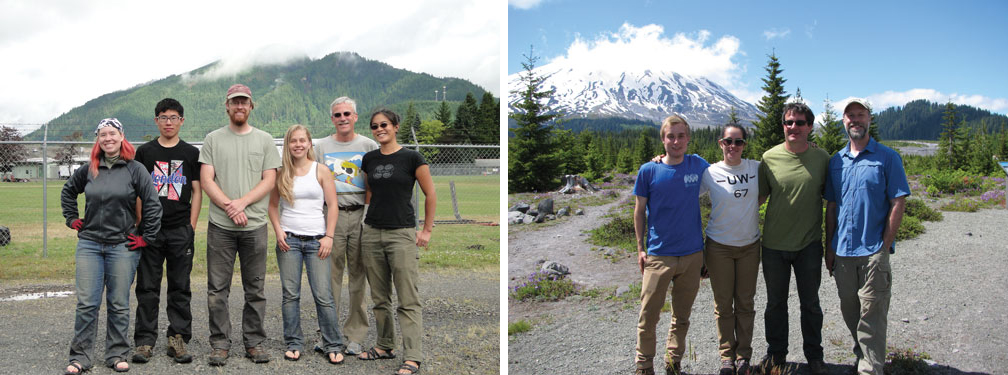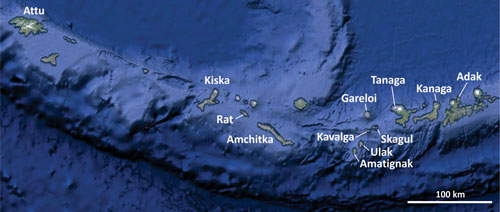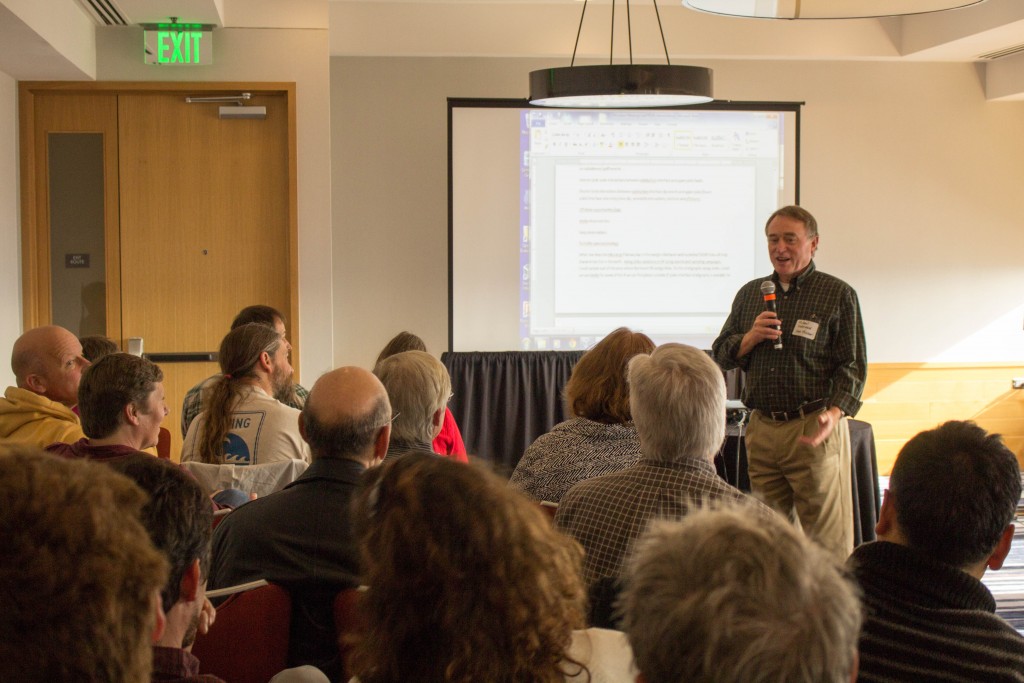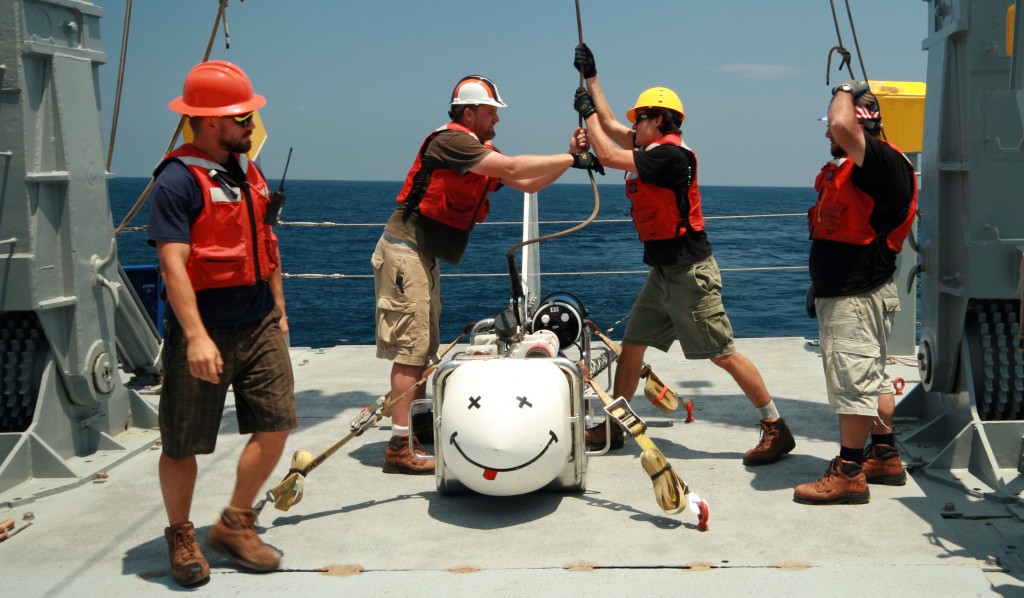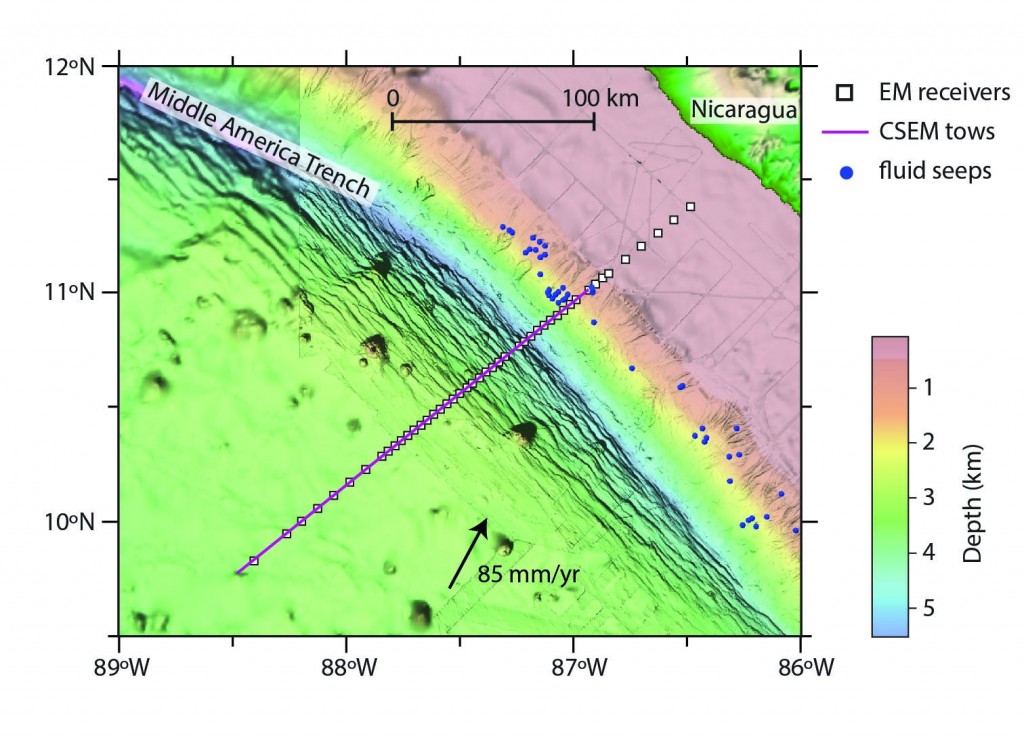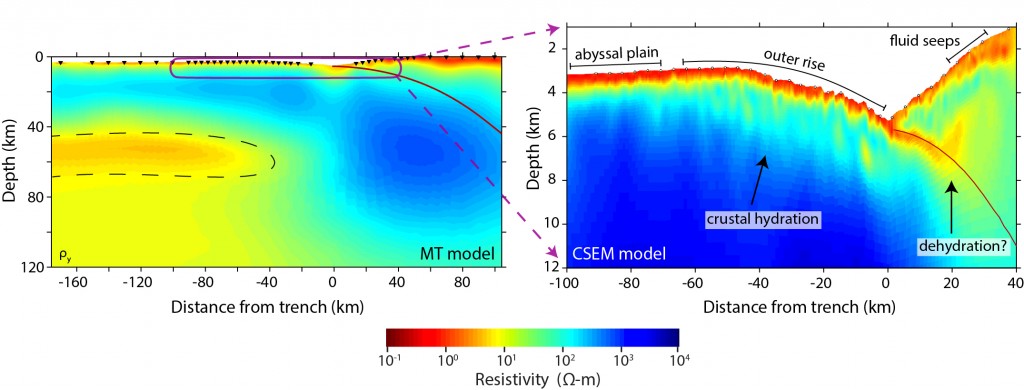Report retrieved from the website of the Department of Terrestrial Magnetism Carnegie Institution of Washington and the Facebook page of the field mission (IFM-Unimak 2015: From the Slab to the Surface)
Scientists have a relatively good understanding of the processes occurring in the upper portions of the Earth’s crust that lead to volcanic activity. However, much remains unknown about
how these shallow processes are controlled by the large-scale tectonics and deep mantle processes that are ultimately responsible for volcanism.
A NSF-funded group led by DTM seismologist Diana Roman headed to Alaska for three weeks,two of which were spent on the research vessel Maritime Maid, to collect seismic data in the Islands of the Four Mountains and tephra samples throughout the eastern Aleutians. The group included Roman and DTM postdoc Amanda Lough, as well as Dan Rasmussen, Alex Lloyd, and Terry Plank from Columbia University’s Lamont-Doherty Earth Observatory, Pete Stelling from Western Washington University, and John Power, John Lyons, Christoph Kern, and Cindy Werner from the U.S. Geological Survey.
The goal of their work is to determine how the amount of water dissolved in magma affects where, and for how long, magma is stored in Earth’s crust. This information is critical for accurately
forecasting volcanic eruptions and understanding the large-scale processes that lead to volcanism in Earth’s subduction zones. The volcanoes targeted in this study have a wide range of magma water contents, magma storage depths, and depths of seismic activity, making them ideal candidates for this research.
Roman led another trip in the summer of 2016 to retrieve seismic equipment from the Islands of the Four Mountains. ■
“Report from the Field” was designed to inform the community of real-time, exciting GeoPRISMS -related research. Through this report, the authors expose the excitement, trials, and opportunities to conduct fieldwork, as well as the challenges they may have experienced by deploying research activities in unique geological settings. If you would like to contribute to this series and share your experience on the field, please contact the GeoPRISMS Office at info@geoprisms.nineplanetsllc.com. This opportunity is open to anyone engaged in GeoPRISMS research, from senior researchers to undergraduate students.
We hope to hear from you!

